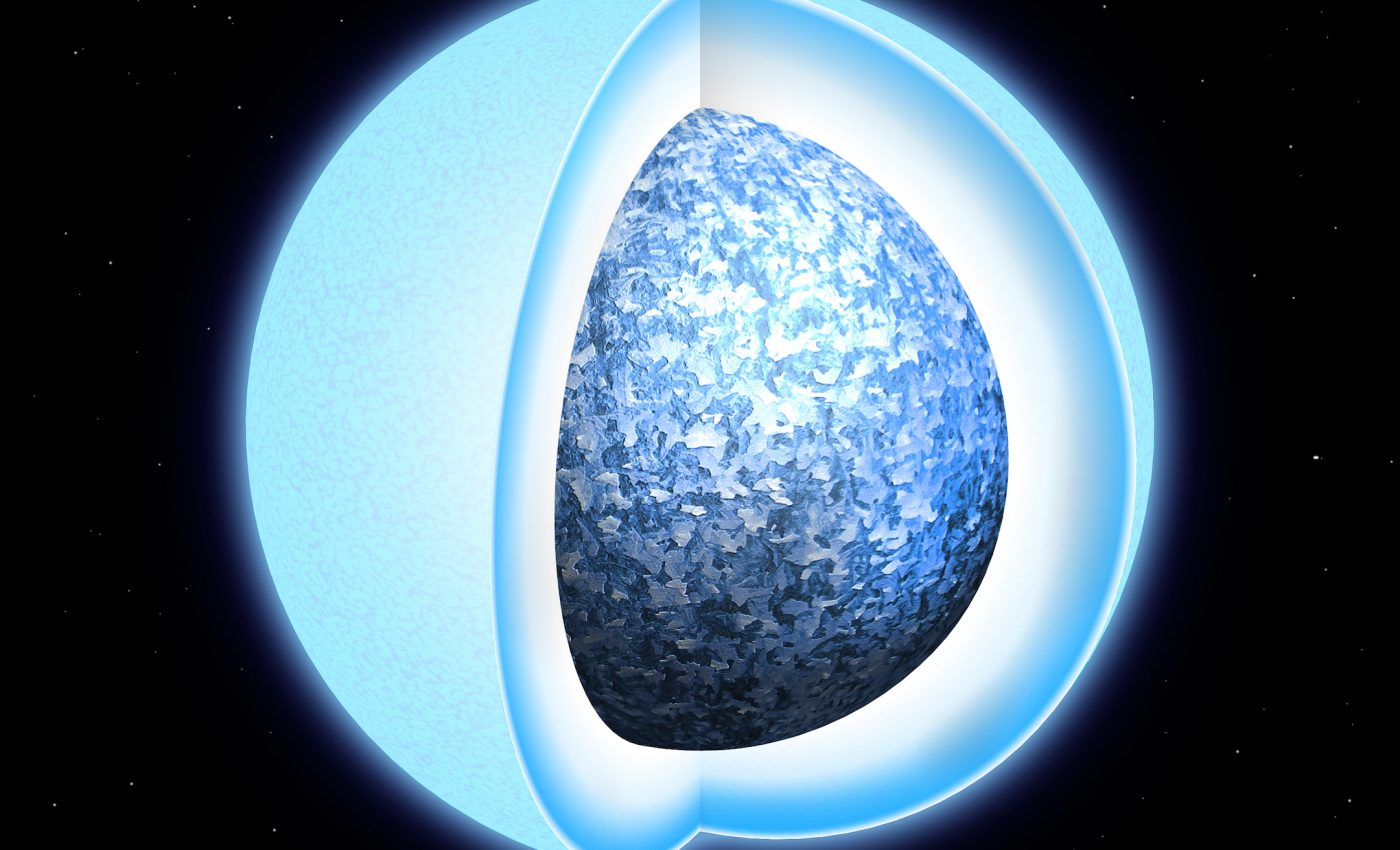
Astronomers have found that stars are turning into crystals
A team of astronomers from the University of Warwick, led by Dr. Pier-Emmanuel Tremblay from the University’s Department of Physics, have found the first direct evidence that some white dwarf stars are turning into crystals.
This observational evidence, obtained with the European Space Agency’s Gaia satellite, reveals that white dwarfs, like our Sun, go through a phase similar to that of water turning into ice — their cores become a mix of oxygen and carbon. This means that previously studied white dwarfs could be billions of years older than previously predicted.
White dwarfs are remnant cores of dead red giants. They’re constantly cooling and releasing stored up heat over billions of years, thus making them some of the oldest cosmic bodies in the universe. White dwarfs are often used as “cosmic clocks” to date other bodies around them.
To come to their conclusion, the team analyzed the luminosities and color of 15,000 white dwarf stars located within 300 light years of Earth via the Gaia satellite.
They then identified a pile-up, a large number of wife dwarfs at specific luminosities and colors that do not correspond with a specific age. However, the astronomers found that this pile-up coincides with the development phase during which heat is expelled in large amounts, thus the white dwarf cooling process is slowed. They estimate that some of these stars have slowed their aging by 2 billion years (15% of the age of our galaxy).
“This is the first direct evidence that white dwarfs crystallise, or transition from liquid to solid,” Dr. Tremblay said of the findings, published in the journal Nature. “It was predicted fifty years ago that we should observe a pile-up in the number of white dwarfs at certain luminosities and colours due to crystallisation and only now this has been observed.”
“All white dwarfs will crystallise at some point in their evolution,” he continued, “although more massive white dwarfs go through the process sooner. This means that billions of white dwarfs in our galaxy have already completed the process and are essentially crystal spheres in the sky. The Sun itself will become a crystal white dwarf in about 10 billion years.”
White dwarfs crystalize when densely-packed atoms in their core unbind and release an electron gas and a positively-charged nuclei in liquid form. As the core continues to cool and reaches about 10 million degrees, the liquid begins to solidify, forming a metallic core with a carbon-enhanced mantle.
“Not only do we have evidence of heat release upon solidification, but considerably more energy release is needed to explain the observations,” Dr. Tremblay added. “We believe this is due to the oxygen crystallising first and then sinking to the core, a process similar to sedimentation on a river bed on Earth. This will push the carbon upwards, and that separation will release gravitational energy.
Dr. Tremblay said that he credits much of this discovery to the Gaia satellite. “Thanks to the precise measurements that it is capable of, we have understood the interior of white dwarfs in a way that we never expected. Before Gaia we had 100-200 white dwarfs with precise distances and luminosities – and now we have 200,000. This experiment on ultra-dense matter is something that simply cannot be performed in any laboratory on Earth.”
—
By Olivia Harvey, Earth.com Staff Writer
Image Credit: University of Warwick/Mark Garlick












